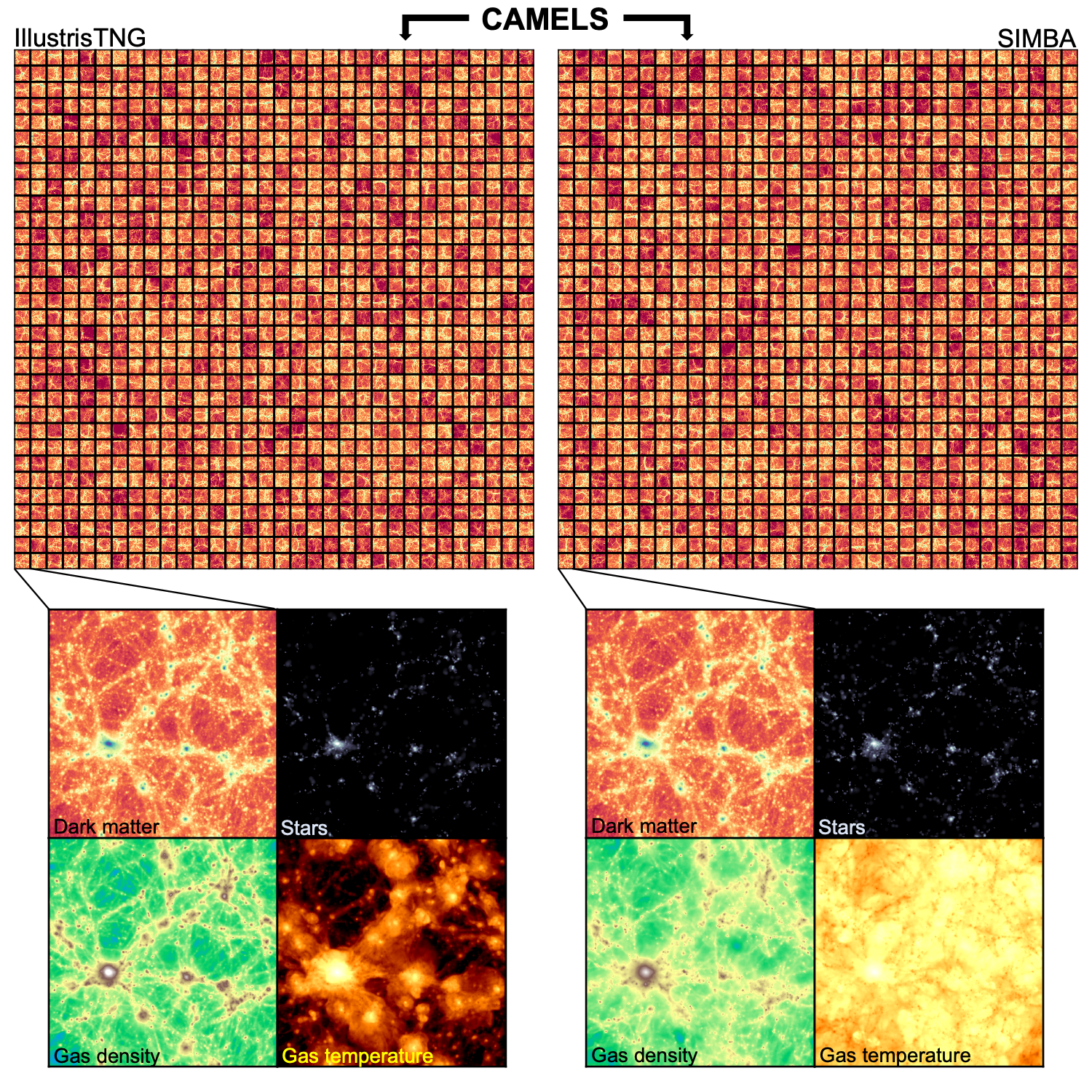The Cosmology and Astrophysics with MachinE Learning Simulations (CAMELS) project is led by Francisco Villaescusa-Navarro (Princeton University), Daniel Anglés-Alcázar (University of Connecticut and Flatiron Institute), and Shy Genel (Flatiron Institute and Columbia University), with a growing number of collaborators from the IllustrisTNG project, the SIMBA simulations team, the SMAUG collaboration, and several other institutions.
CAMELS represents a distinct qualitative shift in current methodology to overcome two major obstacles that are limiting our understanding of the fundamental properties of the Universe. Upcoming multi-billion dollar cosmology experiments will provide an unprecedented amount of data, but the optimal summary statistic to extract the maximum amount of cosmological information is unknown. Equally crucial, a large amount of cosmological information resides on small scales that are significantly affected by astrophysical processes, such as energetic feedback from massive stars and supermassive black holes, which are still poorly understood. The challenge of extracting every bit of information from upcoming experiments requires a change in paradigm, and CAMELS is uniquely positioned to lead the way by (1) providing theoretical predictions for an arbitrary number of observables as a function of cosmology and astrophysics from the largest suite of state-of-the-art cosmological simulations and (2) developing novel machine learning algorithms to maximize the extraction of information by searching through all possible summary statistics while marginalizing over uncertainties in astrophysical effects.
Read the presentation paper of the CAMELS project.
Read Simons Foundation's news article: Record-Breaking Suite of Cosmic Simulations Aims to Identify Universe’s Parameters.
Watch the CAMELS plenary talk at the Cosmology from Home 2021 conference.

 The top panels show the large-scale distribution of dark matter for thousands of simulations performed with the IllustrisTNG (left) and SIMBA (right) galaxy formation models as part of the CAMELS project. The bottom panels compare the distributions of dark matter, galaxies (and their stars), gas density and gas temperature for one representative simulation as performed by each model with the same initial conditions.
The top panels show the large-scale distribution of dark matter for thousands of simulations performed with the IllustrisTNG (left) and SIMBA (right) galaxy formation models as part of the CAMELS project. The bottom panels compare the distributions of dark matter, galaxies (and their stars), gas density and gas temperature for one representative simulation as performed by each model with the same initial conditions.